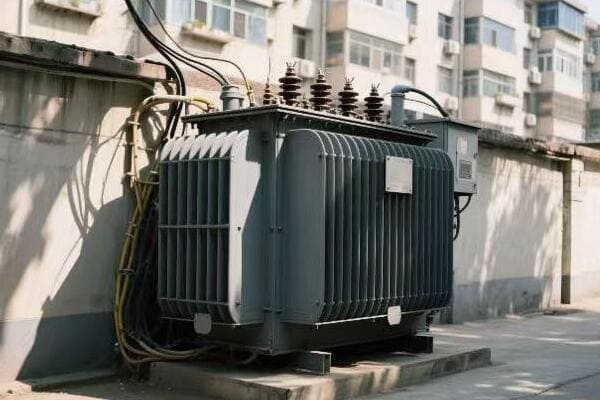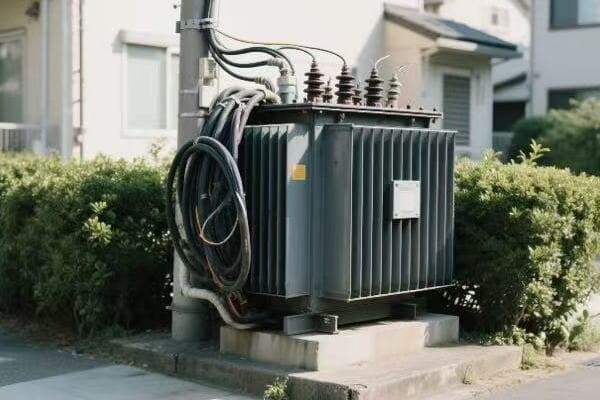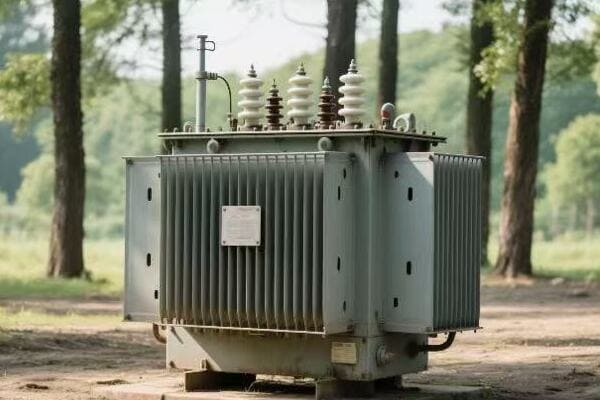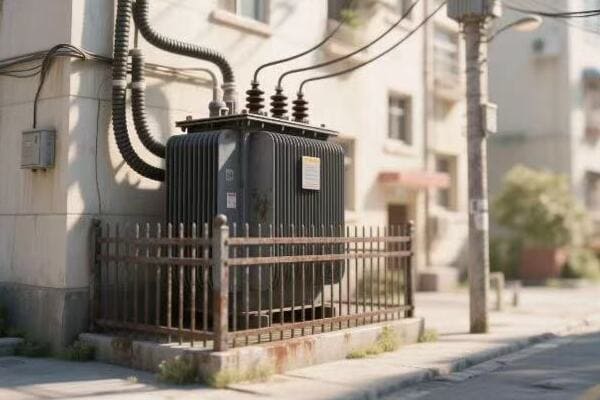The Role of Power Transformer Manufacturers in Sustainable Energy Solutions?
Are you worried about climate change? You’re not alone. As our planet faces environmental challenges, the energy sector is under pressure to find sustainable solutions. But there’s hope on the horizon.
Power transformer manufacturers are playing a crucial role in sustainable energy solutions. They are developing innovative technologies to support renewable energy integration, improve energy efficiency, and create smart grid systems. These efforts are helping to reduce carbon emissions and promote a cleaner energy future.

As someone who has been in the power equipment industry for years, I’ve seen firsthand how transformer manufacturers are stepping up to the plate. Their contributions are not just impressive; they’re essential for our sustainable future. Let’s dive into how these companies are making a difference.
Green Giants: How Are Transformer Makers Powering the Renewable Energy Revolution?
Picture this: vast fields of solar panels and towering wind turbines dotting the landscape. It’s an inspiring sight, but have you ever wondered how all that green energy gets to your home?
Transformer manufacturers are creating specialized transformers designed to handle the unique challenges of renewable energy sources. These transformers can manage the variable output of solar and wind power, ensuring a stable and reliable supply of clean energy to the grid.

I remember visiting a wind farm a few years ago. The sight of those massive turbines was impressive, but what really caught my eye were the transformers at the base of each tower. These aren’t your average transformers. They’re specially designed to handle the unique challenges of wind power.
Adapting to Renewable Quirks
Renewable energy sources like wind and solar are fantastic for the environment, but they come with their own set of challenges. Here’s how transformer manufacturers are tackling these issues:
- Variable Output Handling: Wind doesn’t always blow, and the sun doesn’t always shine. Transformers for renewables need to handle this variability.
- Bidirectional Power Flow: With more people generating their own solar power, transformers now need to manage power flowing both ways.
- Harsh Environment Resistance: Offshore wind farms need transformers that can withstand salt spray and constant vibration.
Innovations in Transformer Design
To meet these challenges, manufacturers have come up with some clever solutions:
| Innovation | Purpose | Benefit |
|---|---|---|
| Tap Changers | Adjust voltage levels | Maintain stable output despite variable input |
| Corrosion-Resistant Materials | Protect against harsh environments | Longer lifespan for offshore transformers |
| Smart Monitoring Systems | Real-time performance tracking | Quick response to changes in renewable output |
These innovations aren’t just cool tech; they’re essential for making renewable energy a reliable part of our power grid. Without them, integrating large amounts of wind and solar power would be much more difficult.
The Impact on Renewable Adoption
The work of transformer manufacturers has had a real impact on renewable energy adoption. By creating transformers that can handle the quirks of renewable sources, they’ve made it easier and more cost-effective to add green energy to the grid.
I’ve seen small towns go from relying entirely on fossil fuels to getting a significant portion of their power from local wind farms. This wouldn’t be possible without the right transformer technology.
As we push for more renewable energy, the role of transformer manufacturers will only become more important. They’re not just keeping up with the green energy revolution; they’re helping to drive it forward.
Efficiency Wizards: What Tricks Are Transformer Companies Using to Save Energy?
Have you ever wondered how much energy is lost in the process of getting electricity from a power plant to your home? The answer might surprise you. But here’s the good news: transformer companies are working hard to minimize these losses.
Transformer manufacturers are employing advanced materials, innovative designs, and smart technologies to create more efficient transformers. These improvements reduce energy losses during transmission and distribution, leading to significant energy savings and reduced carbon emissions.

I remember when I first learned about transformer efficiency. It was eye-opening to realize how much energy could be saved with even small improvements. Now, let’s look at some of the "magic tricks" these efficiency wizards are using.
The Quest for Efficiency
Improving transformer efficiency is a bit like trying to plug all the tiny leaks in a water pipe. It requires attention to detail and innovative thinking. Here are some areas where manufacturers are focusing their efforts:
- Core Materials: The heart of a transformer
- Winding Design: How the copper coils are arranged
- Cooling Systems: Keeping transformers from overheating
- Smart Technologies: Using data to optimize performance
Innovative Materials and Designs
Let’s dive deeper into some of the specific innovations:
| Innovation | Description | Efficiency Gain |
|---|---|---|
| Amorphous Metal Cores | Uses a special alloy that reduces core losses | Up to 70% reduction in core losses |
| Copper Foil Windings | Replaces traditional wire with thin copper foil | Reduces winding losses by up to 15% |
| Vegetable Oil Insulation | Uses biodegradable oils instead of mineral oil | Improves cooling efficiency and is eco-friendly |
| Digital Monitoring Systems | Tracks performance in real-time | Allows for optimal load management |
These might sound like small changes, but they add up to big savings. I’ve seen transformers with amorphous metal cores that are so efficient, they’re almost cool to the touch even under full load.
The Impact of Efficiency Gains
The impact of these efficiency improvements goes beyond just saving energy. They also:
- Reduce operating costs for utilities
- Decrease the need for new power plants
- Lower carbon emissions
- Extend the lifespan of transformers
I once worked with a utility company that replaced all their old transformers with new, high-efficiency models. The energy savings were so significant that they were able to postpone building a new power plant. That’s the power of efficiency!
As transformer companies continue to push the boundaries of efficiency, we’re moving closer to a future where energy waste is minimized. It’s not just good for the environment; it’s good for our wallets too.
Earth-Friendly Transformers: Are These Big Machines Going Green?
When you think of "green" technology, power transformers probably aren’t the first things that come to mind. But you might be surprised to learn how these big machines are becoming more environmentally friendly.
Transformer manufacturers are adopting eco-friendly practices in their production processes and designing transformers with reduced environmental impact. This includes using biodegradable insulating fluids, recyclable materials, and designs that minimize the risk of soil and water contamination.

I remember a time when environmental concerns were an afterthought in the transformer industry. But things have changed dramatically. Let’s explore how these massive machines are going green.
The Green Transformation
Transformers are getting an eco-friendly makeover in several ways:
- Materials: Using more sustainable and recyclable components
- Insulation: Switching to biodegradable fluids
- Design: Creating leak-proof and low-noise models
- Lifecycle: Focusing on longevity and end-of-life recycling
Eco-Friendly Innovations
Here’s a closer look at some of the green innovations in transformer manufacturing:
| Innovation | Environmental Benefit | Additional Advantages |
|---|---|---|
| Vegetable-based Insulating Oil | Biodegradable, non-toxic | Higher flash point, safer operation |
| Dry-type Transformers | No oil leaks, reduced fire risk | Lower maintenance, suitable for indoor use |
| Recycled Core Steel | Reduces raw material consumption | Maintains high performance standards |
| Low-noise Designs | Reduces noise pollution | Improves quality of life in urban areas |
I once visited a transformer factory that had switched to using vegetable-based oils. The difference was remarkable – no more strong chemical smells, and the workers seemed much happier.
The Impact on the Environment
These green initiatives are having a real impact:
- Reduced Risk of Soil and Water Contamination: Biodegradable fluids and leak-proof designs minimize environmental damage in case of accidents.
- Lower Carbon Footprint: More efficient manufacturing processes and the use of recycled materials reduce overall emissions.
- Extended Lifespan: Eco-friendly designs often lead to longer-lasting transformers, reducing waste.
- Easier Recycling: The use of more recyclable materials makes end-of-life disposal less problematic.
I once worked on a project to replace old transformers in a nature reserve. We used the latest eco-friendly models, and it was gratifying to know that we were protecting the local ecosystem while still providing necessary power.
As transformer manufacturers continue to innovate, we’re seeing a shift towards truly sustainable practices. It’s not just about meeting regulations; it’s about taking responsibility for our impact on the planet.
Smart Power: How Are Transformers Getting Brainer in Our Modern Grids?
Have you ever wished your appliances could talk to you? Well, in the world of power distribution, that’s becoming a reality. Transformers, once silent workhorses of the grid, are getting smarter by the day.
Transformer manufacturers are integrating advanced sensors, communication technologies, and data analytics into their products. These smart transformers can monitor their own health, adjust to changing grid conditions, and communicate with other grid components, enhancing overall grid efficiency and reliability.

I remember the first time I saw a smart transformer in action. It was like watching a sleeping giant wake up and start talking. Let’s explore how these transformers are getting their brains.
The Smart Revolution
Smart transformers are changing the game in several ways:
- Self-monitoring: Keeping an eye on their own health
- Real-time adjustments: Adapting to changing grid conditions
- Communication: Talking to other grid components
- Predictive maintenance: Foreseeing problems before they occur
Smart Features in Modern Transformers
Here’s a breakdown of some key smart features:
| Feature | Function | Benefit |
|---|---|---|
| Temperature Sensors | Monitor internal temperature | Prevent overheating and extend lifespan |
| Load Tap Changers | Adjust voltage levels automatically | Maintain stable output despite fluctuations |
| Dissolved Gas Analysis | Detect potential internal faults | Early warning of developing problems |
| Communication Modules | Send and receive data from control centers | Enable remote monitoring and control |
I once worked on upgrading a substation with smart transformers. The amount of data we could suddenly access was mind-boggling. We could see everything from oil temperatures to load patterns in real-time.
The Impact of Smart Transformers
The introduction of smart transformers is having far-reaching effects:
- Improved Grid Stability: By adjusting to changes in real-time, smart transformers help maintain a stable power supply.
- Reduced Downtime: Predictive maintenance means problems can be addressed before they cause outages.
- Better Asset Management: Utilities can make more informed decisions about when to replace or upgrade equipment.
- Integration of Renewables: Smart transformers can better handle the variable nature of renewable energy sources.
I remember a case where a smart transformer detected a developing fault and alerted the utility company. They were able to schedule a repair during off-peak hours, avoiding what could have been a major outage.
As our grids become more complex, with more renewable sources and electric vehicles, these smart transformers will play a crucial role in keeping everything running smoothly. They’re not just transformers anymore; they’re the brains of our modern power system.
Transformers in Transition: How Are Manufacturers Keeping Up with Our Changing Energy World?
The energy landscape is changing faster than ever. Remember when solar panels were a rare sight? Now they’re everywhere. How are transformer manufacturers keeping up with this rapid change?
Transformer manufacturers are adapting to the changing energy landscape by developing flexible and modular designs, investing in research and development, and collaborating with tech companies. They’re creating transformers that can handle diverse energy sources, support electric vehicle charging, and adapt to the evolving needs of smart cities.

I’ve been in this industry for years, and I’ve never seen it change so fast. Let’s look at how transformer manufacturers are riding this wave of change.
Adapting to the New Energy Reality
Transformer manufacturers are focusing on several key areas:
- Flexibility: Creating transformers that can handle multiple types of energy sources
- Modularity: Designing systems that can be easily upgraded or reconfigured
- Digital Integration: Ensuring transformers can be part of the Internet of Things (IoT)
- Sustainability: Meeting increasing demands for eco-friendly solutions
Innovations for the Future
Here are some of the exciting developments I’m seeing:
| Innovation | Purpose | Potential Impact |
|---|---|---|
| Solid-State Transformers | Handle DC and AC power | Enable more efficient integration of renewables and EVs |
| IoT-Enabled Transformers | Connect to smart grid systems | Improve grid management and energy efficiency |
| Mobile Transformer Units | Provide temporary or emergency power | Enhance grid resilience and disaster response |
| High-Temperature Superconducting Transformers | Reduce energy losses | Significantly improve transmission efficiency |
I recently visited a research lab where they were testing solid-state transformers. The potential for these devices to revolutionize our grid is enormous. They could be the key to seamlessly integrating renewable energy and electric vehicles into our existing infrastructure.
The Challenges and Opportunities
This transition isn’t without its challenges:
- Rapid Technological Change: Manufacturers must constantly update their designs to keep up with new technologies.
- Regulatory Hurdles: New designs often need to go through lengthy approval processes.
- Balancing Act: Meeting demands for both high-tech solutions and cost-effective products.
- Skills Gap: Training workers to manufacture and maintain these new types of transformers.
But with these challenges come opportunities. I’ve seen small, innovative companies partner with established manufacturers to bring new ideas to market faster. There’s a real sense of excitement in the industry about what’s possible.
The transformers of tomorrow will be very different from those of yesterday. They’ll be smarter, more flexible, and more sustainable. As someone who’s spent their career in this field, I can’t wait to see what comes next.
Conclusion
Transformer manufacturers are at the forefront of sustainable energy solutions. They’re creating greener, smarter, and more efficient products that are crucial for our renewable energy future. As our energy needs evolve, these companies will continue to innovate, shaping the power systems of tomorrow.
Free CHBEB Transformer Catalog Download
Get the full range of CHBEB transformers in one catalog.
Includes oil-immersed, dry-type, pad-mounted, and custom solutions.
Quick Message
Request A free quote
We'd like to work with you
- +86 15558785111
- [email protected]
- +86 15558785111
What We Do
CHINA BEI ER BIAN (CHBEB) GROUP, with 218 million in registered capital, originated from Beijing Beierbian Transformer Group. Headquartered in Beijing for R&D, it operates major production bases in Nanjing and Yueqing, producing high-quality products.
Latest Product
address
BeiJing
No 3,RongJing East Road,BeiJing Economic Technological Development Area,BeiJing,China
JiangSu
No 7️Xiangfeng Road,Jiangning,NanJing,JiangSu,China
WenZhou
No.211, Wei 16 Road, Industrial Zone, Yueqing, Wenzhou, Zhejiang, China.
XiangYang Industrial Zone ,YueQing,WenZhou,ZheJiang,China
contact us
- [email protected]
- +86 13057780111
- +86 13057780111
- +86 15558785111
Copyright © Bei Er Bian Group


